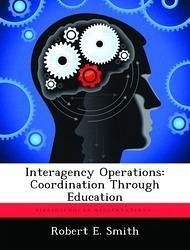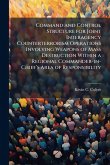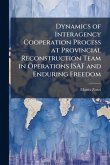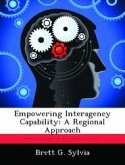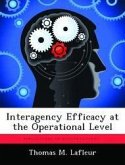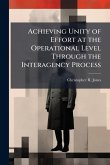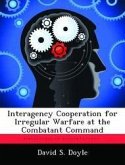This monograph examines the possibilities of improving interagency coordination through an established educational system. The national security interests of the United States rely on the efficient and effective application all instruments of power. The Department of State and Department of Defense are typically responsible for the direction, implementation, and enforcement of foreign policy. However, threats to national security in the twenty-first century may require a more multifunctional interagency approach with diverse capabilities. A single organization does not have these required capabilities. Through a collaborative effort of various government agencies and departments, these capabilities are available. The interagency process is the national level system to coordinate the actions of government agencies in national security affairs. Interagency operations require the cooperation of participating organizations. This monograph researched the development of joint military operations to illustrate necessary actions required to achieve this synergistic effort. From the Unified Command Plan of 1947 to a "unified action" concept of 2001, the military has gained insight into the difficulties of service coordination and cooperation. Significant to this study was the lesson learned concerning education and the development of a joint force. An outcome of the Goldwater-Nichols Act of 1986 was the requirement for the Chairman of the Joint Chiefs of Staff to oversee the educational development of joint specialty officers (JSO) in order to fill joint duty assignments. The joint professional military education (JPME) curriculum balanced service specific and joint educational requirements. JPME provides a common reference for joint duty officers to collectively plan military operations. This monograph concludes that a professional education system can improve interagency coordination through a shared learning experience. Recognizing the bureaucratic difficulties associate This work has been selected by scholars as being culturally important, and is part of the knowledge base of civilization as we know it. This work was reproduced from the original artifact, and remains as true to the original work as possible. Therefore, you will see the original copyright references, library stamps (as most of these works have been housed in our most important libraries around the world), and other notations in the work. This work is in the public domain in the United States of America, and possibly other nations. Within the United States, you may freely copy and distribute this work, as no entity (individual or corporate) has a copyright on the body of the work. As a reproduction of a historical artifact, this work may contain missing or blurred pages, poor pictures, errant marks, etc. Scholars believe, and we concur, that this work is important enough to be preserved, reproduced, and made generally available to the public. We appreciate your support of the preservation process, and thank you for being an important part of keeping this knowledge alive and relevant.
Bitte wählen Sie Ihr Anliegen aus.
Rechnungen
Retourenschein anfordern
Bestellstatus
Storno

